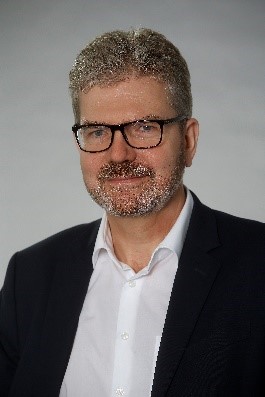-

Sustainable Bridge Maintenance through Life Time Extension and Optimization
Technical Director, Sund & Baelt A/S, Denmark
The Storebaelt Link, owned by Sund & Baelt A/S, located in Denmark between Funen and Zealand comprises the Eastern Suspension Bridge, 6.8 km long, and the West Bridge, a 6.6 km long Concrete Bridge. The West Bridge and the East Bridge are connected by a 3 km motorway on the island Sprogo. The Bridges are four-lane motorways with emergency lanes, the West Bridge further includes two railway tracks.
The East Bridge superstructure is an aerodynamically shaped fully welded closed box steel girder. The distance between the pylons of 1,624 meters makes it the 5th longest suspension bridge in the world.
Sund & Baelt has been working with data driven digital asset management since the start of operations in 1998. The data from the asset management system together with data from the ERP system, condition measurements like the Scada System and the Structural Health Monitoring and other relevant data are used to develop a data model of the bridge in order to optimize the Total Life Cycle Cost and to extend the service life of the bridge.
Data is used in the maintenance plans and the 50 year plans for reinvestments/CAPEX renewals. The data models can be used to identify the factors that are critical for the maintenance and the reinvestments in order to optimize both the total cost of ownership, the condition of the bridge and the extended service life.
The data models has been tested in several projects and can be used to improve new projects as well as through maintenance and service optimizations for the new projects and TCO considerations regarding extending service life for the bridge as well as for the different components. The data models includes GIS maps and graphics in order to ease the use of the data.
The present expected lifetime estimate for the bridge has been extended from 100 years to 200 years based on experience with the condition of the bridge compared to other bridges combined with the expected effect of the new data based tools and analytical tools. In Denmark the governments goal is to reduce the total CO2 emissions with 70% in 2030 compared to 1990. New technologies and all businesses and sectors contributes to the reduction.
The extended service life of 100 years of the bridge contributes to an improved sustainability estimated to approx. 750.000 tons CO2, (the estimated amount of CO2 equivalent to a new fixed link) as well as an improved economy from the lower cost of mainenance compared to a new construction.

